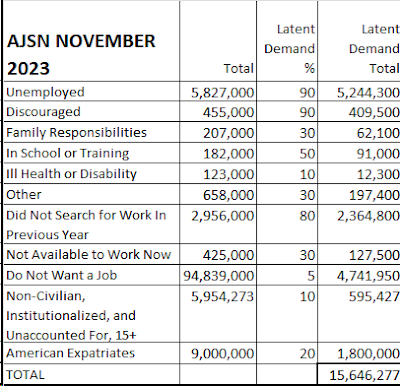It’s an ancient problem. Some workers look busy, but don’t accomplish much. Some are low-profile, efficient, and quietly, often with lower hours or even apparent effort, get a lot more done. Some focus on quality, others on quantity.
How can supervisors and higher-ups best manage these
different situations?
One way is electronic monitoring. That is nothing new. When I worked at a data-entry position 36
years ago, supervisors got reports giving workers’ production, though at a
coarse level, and other statistics such as how many things they deleted. That was a start, though not all items
produced were the same difficulty. For
most cubicle jobs, though, direct production is harder to assess, and some
measures can be simply misleading.
That issue came to the fore with “Microsoft executives say
it’s ‘wrong’ for managers to spy on remote employees’ mouse clicks and
keystrokes: ‘That’s measuring heat rather than outcome’” (Grace Kay, Business
Insider, September 22nd, 2022).
That is old also – an AT&T second-level manager in a group I was in
over 30 years ago had software set up to tell him when a certain worker opened
the databases he used; it wasn’t effective for long, as the employee set up
something to automatically do that every morning he was scheduled. The modern version may, per a quote from
Microsoft’s CEO, be a result of “productivity paranoia,” especially concerning
remote and hybrid workers.
Another more general involvement area is about working extra
hours. A noticeable indication of that is
communicating at unusual times. However,
“After-hours work emails are facing more legal restrictions” (Megan Cerullo, Yahoo
Finance, February 3rd).
One example is that “employers in Ontario, Canada are required to have
written policies on disconnecting from work that outline when work-related
communications, including emails, phone call and video conferences, are
prohibited.” Clearly, “the onus is on
both the employer and employee to set boundaries around communicating outside
of normal working hours,” and – for that matter, working in general – but often
that does not happen.
Going further, Adam Waytz, in the March-April Harvard
Business Review, wrote an article printing out to over 12 pages, titled
“Beware a Culture of Busyness.” The idea
is also well-established, and the first part, with office people when asked how
they were doing saying they were “busy,” matched AT&T culture when I was
there. Per Waytz, “Busyness has become a
status symbol,” research has showed that those seeming busy are perceived as
““important and impressive”” and “”morally admirable,” regardless of their
output.” The author described how “a
culture of busyness” can perpetuate itself, and named five ways to roll that
back: “reward output, not just activity”; “assess whether your organization is
generating deep work and eliminating low-value work”; “force people off the
clock”; “model the right behavior”; and “build slack into the system.”
A development newer than quiet quitting, or refusing to work
additional time or put in unusual effort, is the subject of “Gen Z’s ‘lazy girl
jobs’ trend hits back at hustle culture, but critics warn outcome could be
problematic” (Taylor Penley, Fox Business, July 29th). Such arrangements, per the article, are
“well-paying often fully or partially remote jobs that require minimal effort
to cut back on the stress and anxiety they say is harmful to mental
health.” Per one respondent, they
include exercising and doing household tasks during work hours. Unsurprisingly, “not everyone is on board
with the concept,” and it “isn’t gender-exclusive.” I suspect this trend comes mostly from lax
remote-work supervision and standards, with Generation Z workers, with shorter
work-experience sets containing little time during low-hiring eras, especially
willing to articulate and practice what they want, even if it sounds bad. If employers can harvest the advantages of
clear policies and performance-centered employee evaluations, they can
integrate those things with a conscious, focused retreat from busyness culture,
and get a net benefit from it, especially considering how those policies can
minimize expensive worker turnover.
Encouraging and rewarding activity over results is not only
constructive but good business. I was a
top producer at AT&T, even though I worked little extra time. When I saw those inflating their hours but
not their production, it discouraged me and my kin. Management did not want people doing the most
work moving to competitors, but that was sometimes a needless consequence. When companies realize why it is poor
practice to encourage “heat, rather than outcome,” they can in theory improve
this problem. But can they in reality? Many managers cannot tell the difference
between quality and quantity. If they
can get past that, many will be surprised at how much their businesses will
improve.


